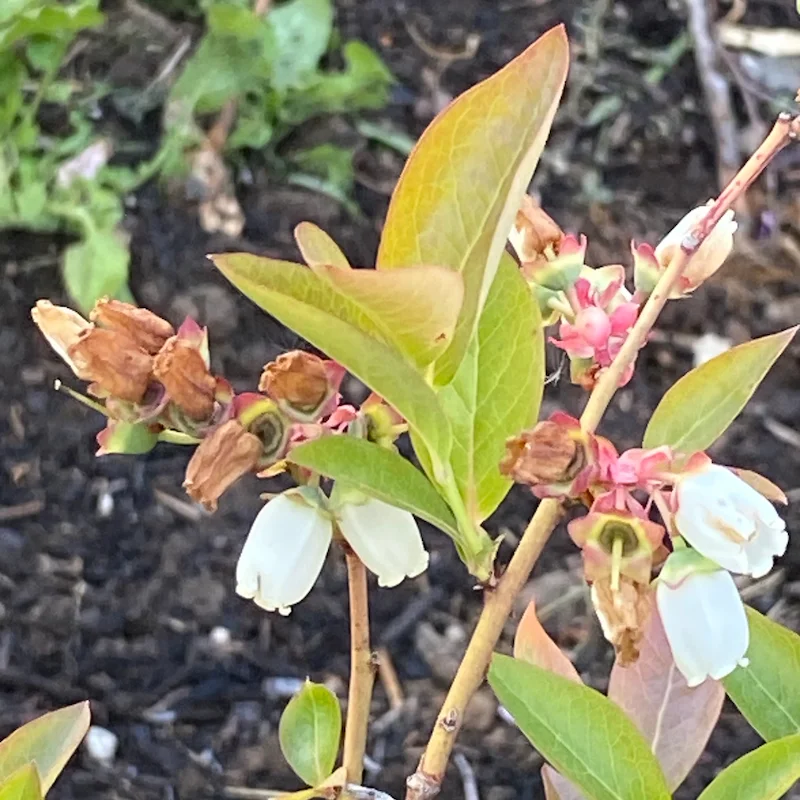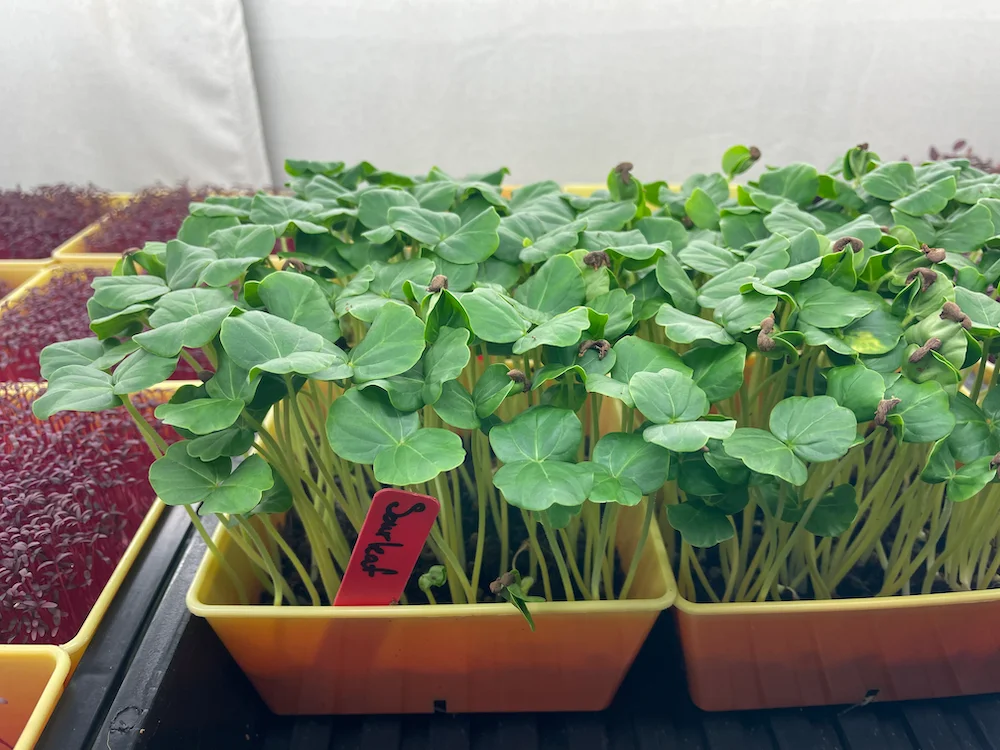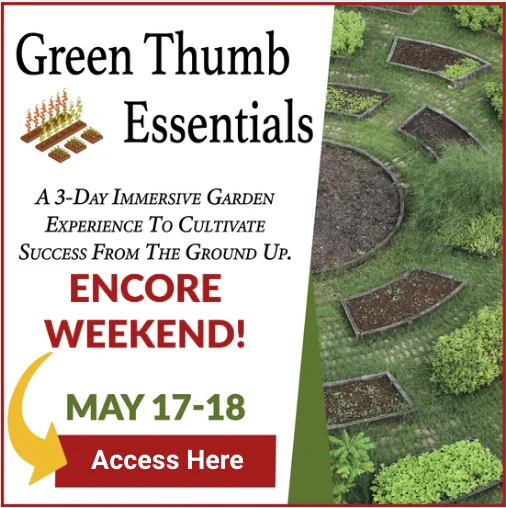Home Gardener’s
Weekly
Issue
No. 125
May
16, 2025
Remedy: Ancient Medicine for Modern Illness
Most people exploring food as medicine stop at eating healthier and adding superfoods like chia, moringa, or wheatgrass. But there’s a powerful third stage many never reach—one that unlocks the full potential of plant-based healing: herbal medicine.
Herbal medicine brings in the ancient wisdom of powerful green remedies that target issues like stress, hormone imbalances, low energy, chronic disease, and more. This is where the next revolution in natural health begins—using herbs not just to treat illness, but to build vitality and resilience every day.
That’s why we’re excited to invite you to Remedy: Ancient Medicine for Modern Illness, a FREE documentary series featuring 42 world-renowned experts sharing the most effective herbal solutions for today’s biggest health challenges. Whether you’re struggling with a condition or simply want to elevate your well-being, you’ll learn how to use herbs to feel your best—naturally!
Don’t miss this opportunity to step into the next stage of your healing journey!

Weekly Garden Tip
If you want to plant using the lunar calendar, the full moon is the time to plant your root and rhizome crops and perennials like carrots, beets, garlic, ginger, etc. And transplant seedlings for protection from root shock, too.

Free Resource
Want to grow a variety of microgreens with ease? This Quick Guide to Growing Over 20 Varieties of Microgreens gives you the essential specs for each variety, including how much seed to use, germination times, and harvest expectations. Maximize your space and get the most out of your microgreens with this free, handy chart that takes the guesswork out of growing over 20 different types.
If you’ve ever battled pests, diseases, or weeds in your garden, you’re not alone. From cabbage moths to spotted wilt and weeds overtaking your zucchini—these issues can turn your garden from a joyful escape into a frustrating chore.
But what if you could get Mother Nature to handle the hard stuff for you—organically? It’s not just possible; it’s what experienced gardeners do every day. They don’t spend their time chasing problems—they prevent them from taking root in the first place.
The secret? It’s all about mindset. Experienced gardeners know that pests and diseases are often symptoms of deeper issues. They’ve learned to listen to their garden, support their plants’ natural defenses, and create balanced conditions where pests don’t thrive.
We’ve put together a FREE downloadable worksheet to help you adopt this mindset and start enjoying a healthier, more resilient garden.
🥕 BLOG 🥕
The Difference Between Microgreens & Sprouts
Microgreens and sprouts often get grouped together, but they’re not the same. If you’ve ever wondered which is better or what sets them apart, you’re not alone. Knowing the difference helps you choose the best option for your meals, your health, and even your growing space. Let’s break it down so you can feel confident reaching for the right greens.
What: Green Thumb Essentials ENCORE WEEKEND
Who: Grow Your Own Vegetables
When: May 16-18, 2025
Missed a session or want to rewatch your favorite parts? You’re in luck!
The Green Thumb Essentials Encore Weekend is happening May 17 & 18—your chance to catch all the replays from this inspiring event. Whether you want a refresher on key tips or didn’t get to attend all of the live sessions, this weekend is your opportunity to dive in and soak up the goodness.
Join thousands of fellow garden-curious folks from around the world and relive the energy, excitement, and aha-moments from all three days. From discovering why growing your own food is so life-changing to learning how to grow $400 worth of organic food in just 40 days, this event is packed with valuable insights for beginners and seasoned growers alike. Don’t miss your chance to catch what you missed—or experience it all over again!

WHAT’S HAPPENING IN HARVEST CLUB
This week’s LIVE Q&A was about anything from kale and compost to iguanas, voles, and maggots– oh my! To view the sneak peek, log into your portal and click here.
🍅🥕🌽🫐🍆🌱 Get your questions answered and keep moving forward on your fresh food goals in Harvest Club! 🍅🥕🌽🫐🍆🌱
Not a member of our garden membership Harvest Club? You can get a one-time complimentary two-month membership with any of our courses. Harvest Club has tons of resources to help you thrive. Plus, you get access to ongoing garden support through email. Learn more here.

Dear Arti:
Question: For a raised bed 4 feet wide X 24 feet long X 18 inches height, which direction should the length be going such as East-West or North-South for growing vegetables? The 24 feet length direction. – Walt, Ontario
Answer: Hi Walt,
This is a great question; thank you for asking! It is really important to orient your beds in the proper direction so that you maximize your sun exposure.
In the northern hemisphere, it’s best to have a south-facing garden– that is, the length of the bed runs east to west. This way, as the sun travels at a southern angle east to west, your plants will get the most sunlight.
But bed orientation isn’t the only thing to consider here. You’ll also want to make sure that you plant your shortest crops on the southernmost side and the tallest crops to the north. This way, your tall plants don’t shade out your shorter crops. There are exceptions to this, but this is how you’ll want to do it until you get into crop planning and bending some of the rules a bit to extend harvests.
I hope that helps, Walt!
Oh! And for those of you in the southern hemisphere, you’ll do the opposite and plant your tallest crops on the southernmost side. 😉
—————————————————————————————
Question: How do I get rid of voles/moles – with no pesticides or other things that will hurt people. – Kathryn P.
Answer: Hi Kathryn,
Great question!
Just in case anyone reading this doesn’t know, moles are actually a beneficial in almost all cases. Usually when we see ground damage we blame moles, but usually it’s voles or other burrowing animals.
Moles usually live individually, so you’ll almost always just see one. It is rare to find a gathering of more than one or two moles.
Moles are insectivores, so they don’t damage plants. Occasionally a plant will be toppled by accident, but the benefit they provide can be worth the few plants that get toppled, as moles eat grubs and other pests that burrow deeper into the soil than we can get to.
Voles are a different story. Not only do they eat plant matter, but they also carry human diseases, so we definitely don’t want them around our food.
For smaller, more burrowing rodents like voles and mice, you’ll need barriers below and above ground where the holes in the fence are no bigger than dime size. Anything bigger than that and they can squeeze through.
There are many different strategies for this type of fencing. The one that seems to work the best is to get quarter-inch hardware cloth. You want the hardware cloth 2 feet down and 1 foot horizontally. So, if you make an L shape where the bottom of the L heads into the garden, that’s ideal.


The fruit bushes are bursting to life! Our blueberry and salmonberry plants are in full bloom, promising sweet rewards in the weeks ahead. The blueberry bushes are dotted with tiny bell-shaped blossoms, while the salmonberries show off delicate pink flowers that hint at the juicy, golden-orange berries to come. It’s an exciting time in the garden—each bloom a hopeful sign of the harvest season on the horizon.


Connect with us:
This page may contain affiliate links. If you click and take action, Grow Your Own Vegetables LLC may be compensated. We only recommend events and products that we love and that we know can be helpful to you as a gardener.






